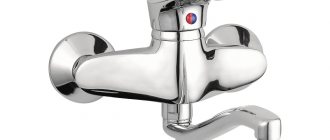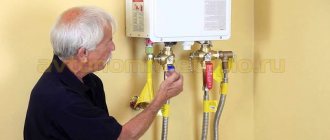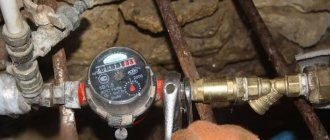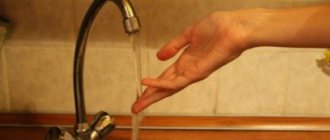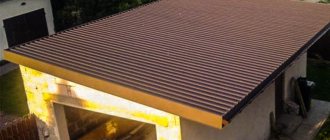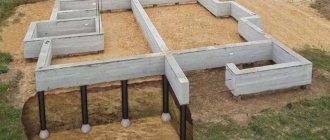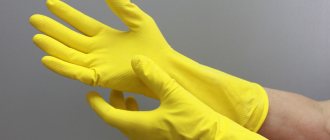Installing water meters with your own hands is currently a pressing issue. On July 1, 2013, a law on the mandatory installation of water meters came into force in Russia, and now every consumer, whether you like it or not, will have to acquire cold and hot water flow meters. True, many have installed them a long time ago - the savings are immediately visible and noticeable in the budget.
Those who relied on chance and do not know how or do not want to work with their hands will now have to fork out: plumbing companies and individual craftsmen immediately raised prices for work, citing the large flow and urgency of orders; there is nothing to object to. So it makes complete sense to learn how to install water meters yourself. Installing a water meter yourself is a simple matter; going through the authorities takes more time.
Which counters to choose?
The best option: turbine (with impeller) mechanical - cheap and cheerful. An electronic meter may be “cool,” but electronics tend to break down, and replacing water meters in an apartment means, in addition to expenses, a new round of overcoming bureaucratic formalities.
Meters for cold and hot water require different designs. This is immediately visible upon purchase: they are marked with blue and red belts, respectively. If you put a “hot” meter on a cold pipe, there will be no problem, but a “hot” one costs more. It is pointless to guess what will happen if you install a meter for cold water on hot water; this option will simply not be allowed for use.
You need to buy ordinary apartment water meters, without chasing something exceptional. Water control metering devices are subject to mandatory certification. Since it is on sale, it means it has passed certification. And after verification and sealing, you are no longer responsible for it, unless you accidentally broke it.
When purchasing a meter, make sure that it is fully equipped: the kit should include a strainer, two connectors with nipples, union nuts and gaskets, and a check valve. Unscrupulous sellers (this is often the case with individual traders at iron markets) sometimes disassemble the meters and sell the components separately, so it is better to buy meters in a specialized store.
The next important point when purchasing a meter is its passport. It must be printed, sealed with a factory stamp, and the serial numbers in the passport and on the product must match. A meter with a xeroxed piece of paper, even if you were not handed a substandard one, will be accepted for verification, but you will still have to pay.
When can water meters be installed?
To understand the question posed, I will describe several possible situations from life.
Option 1. Your apartment is not new, with a working water supply and working water collection from the network. Under such conditions, you need to install a water meter insert.
Note: A water meter insert is a water supply unit consisting of a water meter, a coarse filter, a check valve and 2 fittings with union nuts for connecting the meter (photo below).
Option 2. You are undergoing renovation work in your apartment and installing a new water supply system, a water collection system and installing a water meter is just the repair stage.
Option 3. You have a new building and you are installing a new water collection system and don’t know when you will need a meter and its registration.
For any meter installation option, it is important to understand:
It can be said that the installation of a meter is one of the final finishing works on the water supply system. It cannot be installed if welding work is planned, and the layout of the future water supply is unclear.
That is why in the rules of practice there is a simple and very useful recommendation:
For the duration of repair work and to complete the plumbing in the room, instead of water meters in the water metering unit, permanent pipes made of black steel or galvanized pipes are installed.
Important: The length of the hose must correspond to the length of the meter to be installed later.
drift 110 mm
A similar insert is made during repairs or replacement of the meter, so as not to be left without water in the home.
To summarize, all of the above, therefore, it is important to know the sizes of water meters that you need to know to purchase (order).
Stopcocks
The water meter is most often equipped with a special shut-off valve. It has a special feature: an eyelet with a hole on the outgoing pipe for sealing. Without this, you can turn off the tap, disconnect the pipe, fill the tank with water, then connect the pipe again, and the meter will show zero flow. If the pipeline is plastic at welded joints, it is allowed to install a shut-off valve without sealing. But it’s up to the city water supply inspector to decide whether this is possible or not. Further, of course, requires no explanation.
If the shut-off valve is complete, make sure that it is not silumin. Silumin taps are subject to sudden destruction from intercrystalline corrosion, and the nearest point where in this case it would be possible to shut off the water gushing into the house would, at best, be in the basement, or even in a well on another street. The metal-plastic stopcock is quite usable.
It is also recommended to immediately purchase a second, regular stopcock. It is installed immediately after drainage onto the flush tank. If you start renovating a bathroom or kitchen, you can use the toilet as always.
Why do you need the size of water meters?
I repeat, you need to know the size of water meters in order to be able to install a water distribution unit in a house or apartment without installing the meter itself. Or for temporary replacement of the meter itself in case of malfunction and replacement.
We found out that the installation length of the water meter is important. If it is 110 m, you need a 110 mm sweep instead of a meter. If the length is 80 mm, you need a bend of 80 mm.
Next, with the squeegees, you buy a connecting kit DN=15 080/110 (pictured) and install a water meter insert, only instead of water meters you install sparges.
connection kit
After finishing all the dirty work in the apartment or house, turn off the water, unscrew the union nuts of the connection kit from the drains and easily install water meters instead of the drains.
Some technical features
- If the apartment where water meters are planned to be installed has a fire drainage system, then you need to install a valve on the bypass pipe, which will subsequently be sealed by the water utility. In fact, this valve should be installed by firefighters, who should be notified in advance. But permission from the fire department to install it is not required, so decide for yourself: declare and wait, or give up and buy it on your own.
- The second point is if the hot water supply system is made according to a two-pipe scheme. In apartments this occurs in exceptional cases, and the lucky inhabitants of such apartments know what an elevator unit is in a residential building. To install a hot water meter in such an apartment, you will need to additionally purchase a bypass valve for the circulation pipe, otherwise the meter will “wind” all the time and a lot.
- And the third point is the air temperature in the room where the meters will be installed. According to the specifications for the meter, it should not be below +5 degrees Celsius. This does not cause problems in apartments, but if the meters are in the unheated basement of a private house, you will have to “resolve the issue” with the water utility. Perhaps it would be cheaper and easier to insulate and wall up the pipe in the basement, and put the meter in the toilet, like everyone else.
Is it possible to install the device with your own hands and what is the procedure?
Current legislation states that the installation of a water meter is paid for by the owner of the premises. That is, the apartment owner is obliged to buy the device in advance and install it personally or with the help of a specialist. After this, the water meter is sealed by a water utility employee without paying any fee.
You can install a meter yourself, and no one has the right to object to a citizen who has made such a decision. The only drawback may be that you have to do everything yourself. During installation you will need to perform the following steps:
- First you will need to buy a device and the necessary papers.
- Visit the management company and agree on the time and date for turning off the cold/hot water riser for a certain period of time.
- Install the device according to all rules and open the water supply.
- Call a representative of the water utility for subsequent sealing of the document.
- Sign the document on putting the device into use and subsequently submit it for registration of the accounting device.
After all the necessary measures have been completed, you can begin to transfer testimony and pay receipts received by mail.
Verification and first seal
Installation of a water meter begins with its verification. When purchasing, make sure that the meter has all zeros and there is no need to require a performance check: the initial readings will be taken into account during commissioning, and if the device turns out to be faulty, you will receive an expert opinion, on the basis of which the seller will replace the device for you. Troubles usually do not arise in this case, because The supplier will provide the seller with a replacement in the same manner. Of course, if the meter was not bought secondhand from a random person.
For verification, the meter is handed over either to the instrumentation service (control and measuring devices) of the water utility, or to the centralized city/district instrumentation department, or to the instrumentation department of the housing office, or to a private company operating under a license. In any case, verification is free, this is stipulated in the law on water and gas meters.
You need to find out where exactly to hand over the device to the housing office. If you hear something like “Not in the know” there, go straight to the chief engineer of the housing office: he must be in the know. This is stated in black and white in his job description. And it also states that he is obliged to receive citizens. And he signed that he had read the instructions, knew them and was obliged to carry them out.
The meter should be submitted for verification with the factory passport: after verification, an instrumentation stamp will appear on it, and the corresponding columns of the passport will be filled in. For verification, they will take, and must take, the “left” device, but then, most likely, you will have to pay for issuing a technical passport for it and drawing up a verification report: the law applies only to certified devices.
The control center will tell you when the water meters submitted by you will be sealed. Of course, you cannot break the instrumentation seal. A device with a broken factory seal will be taken to the instrumentation, but without the instrumentation seal the water utility will not accept it. There is no need to rush to pick up the device from verification: the law does not provide for any sanctions for late payment by the subscriber, except that it may get lost in the instrumentation warehouse.
However, there are also violations: the water utility is content with the factory seal. Vodokanal is not afraid of this: the average water consumption for subscribers, even with unverified meters, will be normal. But to the consumer, i.e. It doesn’t hurt you to make sure that the counter doesn’t “wind” more than necessary.
Sealing
The legislation of the Russian Federation determines that sealing of meters should be free during the initial installation of devices , as well as after a scheduled inspection or repair.
Keep this in mind if the inspector suddenly wants to mislead you. He is obliged to seal the unit free of charge and document the process.
For re-sealing you will have to pay from 500 to 2000 rubles (depending on the drawn up contract), but this amount will be much lower than what you will be required to pay if damage to the seal is discovered by an inspector during a routine inspection.
Counter space
According to the rules, the water meter must be installed as close as possible to the entry of the pipeline into the room. The concept “as close as possible” is not specified, because There is a huge discrepancy in the design of water inlets, especially in old houses. During commissioning, the inspector looks to see if it is possible to somehow cut into the pipe up to the meter. Take a closer look before installation so that it will be easier to “resolve the issue” later. Generally speaking, installing a water meter is much simpler if you immediately enter into an agreement with a specialized organization. But this article is intended for those who decided to install the meter themselves, so they will have to deal with the authorities themselves.
In practice, inspectors do not have any questions when installing meters in a city apartment in the toilet next to the toilet, even if the shut-off valve is moved half a meter back along the pipe. The installation also “passes” in the bathroom if the pipes go through the toilet along the floor: in this case, it is almost impossible to hide traces of work on them. But then you will have to drag the outlet for the tank through the wall back into the toilet.
In private homes, inspectors are stricter. Here you need to follow the rule: no more than 20 cm from the outlet of the supply pipe from the wall or floor. If there is a water well on your property, it must be of permanent construction and have a lockable, durable (metal) lid: it will also be sealed. In this case, to carry out work that breaks the seal, except for emergencies of the water utility itself or extinguishing a fire, you will need to call an inspector to unseal it.
Planned replacement of water meters
The meter is replaced in four cases:
- A malfunction of the device occurs when it is impossible or unprofitable to repair it.
- The device does not comply with the accuracy class (based on the results of scheduled verification).
- The end of the service life specified in the product passport.
- Planned replacement of meters as directed by Federal Law (there is none at the moment).
When is it planned to change water meters? Planned replacements include the last two cases. They are the ones that are planned in advance. The first two options fall into the category of sudden replacements that cannot be planned.
Meter installation
The actual installation of the meter is not difficult and is done according to the diagram in the figure. There should be no water taps before the ball stop valve. If the pipes are metal, the first and last joints along the water flow are insulated with FUM or Unilok waterproofing; the rest are produced using standard seals. Let us briefly explain the purpose of the node elements:
- Shut-off ball valve - shuts off the water supply to the room. On a plastic welded water pipe it can be carried some distance back (against the flow of water).
- The mesh filter collects fine suspended matter to prevent clogging of the meter. As a rule, it does not exist in city water supply systems, but according to the specifications, a filter is still needed.
- Non-return valve – does not allow the meter to “rewind”. This is possible if there is no water in the water supply and the taps are open due to air intake. A check valve is also required according to the specifications.
A small nuance: when installing, turn the filter drain pipe (which sticks out to the side at an angle) downwards if the meter assembly is located horizontally, or to the side of the meter if the assembly is mounted vertically. Then, if you suddenly need to disassemble and clean the filter, sediment will not flood the meter.
Elements required for self-installation
To install the meter yourself you will need:
| Materials | First of all, you need to prepare: · a device for calculating the volume of water consumed; · adjustable wrench (size up to 3 cm): · flexible liner; filters; · corners, bends; · a device that prevents water mixing - check valves. |
| Tools | In order to “adjust” the diameter of the pipe, couplings are needed. Pipe to pipe will fit more tightly if you use FUM tape. Also useful: · soldering iron; · Bulgarian; · hacksaw or scissors. |
Commissioning
After completing the installation and making sure that there are no leaks anywhere and the meter is counting, you can use water as before, but your consumption will also be calculated as before, to the maximum. Therefore, you need to immediately report installation to the water utility or the organization that operates the water supply system; for example, if you live in a cottage community - under its rule. If you are a sub-consumer, i.e. If your water comes from someone else, you still need to report it to the water supply operators.
An inspector or an authorized employee of the local operator must come to you within three working days. You should have your meter passport and its verification certificate ready. Plumbers, as a rule, do not delay the matter - they are constantly teased “from above” for “free” subscribers. No other documents are needed: the water utility is not obliged to control the qualifications of the specialist who installed the device, as long as the meter is verified, not damaged and installed correctly.
The inspector will record the initial meter readings in the commissioning report, seal the entire meter assembly with his seal and give you a service agreement to sign. If the operator is “your own”, then carefully read the terms of the contract (in general, in this case, it is advisable to do this before purchasing a meter): there are cases when contracts included in small print an exorbitant monthly fee for service, insurance against broken seals and an obviously fictitious verification of the meter every quarter at the expense of the subscriber.
As soon as you sign the contract, you pay for water according to the meter. The second copy of the agreement and the act of putting it into operation should immediately remain with you. As for the passport for the meter, if it is in a single copy, the inspector must take it with him for copying and then return it. To avoid having to go back and forth to get your passport, make a high-quality photocopy or printout of a scanned copy of your passport in advance: the inspector will only thank you.
How to transfer data
You will need to submit actual consumption data monthly. The procedure is implemented differently in different regions, but basically there are several ways:
- pieces of paper torn and filled out from the subscription book are placed in special boxes;
- leave data in your personal account on the website of the water supply organization;
- send emails with testimony to a special address of the organization.
There may be other methods - each water utility or diesel power plant develops them itself. If there are several ways, you choose the one that is easier for you.
Water meter readings can be sent to the campaign website, to their email address, or tear-off slips can be placed in a special box
Some cases from practice
The water flows poorly, but the neighbors have it ok
The filter may be clogged. Then, under no circumstances, do not disassemble or clean it yourself by breaking the seal - submit a request to the operator. According to the law, in this case, calling a specialist, cleaning and resealing are free.
The seal was accidentally broken
Don’t try to “fix it somehow”: this is fraught with a considerable fine. Immediately, on the next business day, notify the operator; A specialist should arrive to you within 24 hours. You will have to pay a little for re-sealing, but don’t waste time: if the broken seal is noticed by an inspector, you will have to pay for water “in full” from the time of the last inspection, and this could be a year, plus a possible fine for failure to register.
Works requiring unsealing
If the work is carried out by a third-party organization or a private master under a contract and project, then, according to established practice, they pay for the resealing. If you missed this point when concluding the contract or started the work yourself, resealing will be done at your expense.
Scheduled and unscheduled verification
If you are sure that the meter has more than it needs (for example, you turned on the verified control meter after it), then you have the right to an extraordinary free verification. While the meter is being calibrated, your water consumption should be calculated according to the average minimum for the region. As for scheduled inspections, without complaints from subscribers, plumbers do not bother themselves or people with them.
Who is legally allowed to install a meter for free?
It should also be noted that according to the law, a specific category of people will be able to install a water meter for free.
This service can be used free of charge by:
- Residents of Russia whose total earnings are below the subsistence level;
- Participants of the Great Patriotic War;
- Incapacitated people belonging to the 1st and 2nd disability groups;
- People who raise disabled children.
Reference! In certain regions of Russia, local authorities can supplement this list of people who can replace the meter free of charge according to the law (for example, people of retirement age); to complete the information, this needs to be clarified in regional government agencies.
"Complicated" apartments
But what if the apartment has a fire hydrant or two-pipe hot water supply? Alas, in this case there is no way to set the counter yourself. This must be done either by the water utility or a licensed specialist from a contractor. *** Although installing water meters is not so much labor-intensive as it is troublesome, the savings on water fully justify it. And since water is becoming more expensive and there is no sign of any reduction in price, a water meter is definitely beneficial. When it comes to installing meters, plumbers most often accommodate subscribers halfway: accurate consumption recording makes it easier for them to report and receive bonuses for savings.
Water meter sizes you need to know
In practice, you need to know two dimensional characteristics of the water meter:
- Its dimensions (length is important, in cramped conditions height and width may be important);
- Diameter of connection to the pipeline.
All these characteristics can be found in the description of the purchased meter.
For example, the popular ITELMA WFW20.D080 water meter has two important parameters for the buyer:
- DN=15mm (connection pipe diameter)
- L=80mm (the length of the meter itself, its body without connecting fittings).
Another ITELMA WFW20.D110 meter has different dimensions: DN=15 mm, L=110 mm.
By the way, the length of the water meter is called its installation length and is indicated in mm.
Note: The designation DN or DN in water supply systems denotes the nominal internal diameter of the pipe in mm.
System check
After installation is complete, you should check how efficient the system is. To do this, turn on the water and slowly unscrew the ball valve. See if there are any leaks. If the system is in order, the meter measures correctly, there are no problems, then the question arises of who seals the water meters, feel free to call a representative of the water utility. He will inspect everything, make the necessary entries in the registration certificate and put a seal. In some cases, a seal can also be placed on the filter, but this is done just like that, just in case, there is no particular need for this. You can read how heat meters are installed for heating in our article.
As a result, you receive a technical passport and a document certifying that the device is sealed and put into operation. From now on, you will pay for water supply services in accordance with the meter readings.
The meter crashes into the highway
Legal side of the issue
There are no clear prohibitions in the law on self-installation of water meters, so if you have the desire and opportunity, then why not? True, there are several important nuances here:
- such meters must be purchased only from licensed companies; you must receive a technical passport along with the device;
- Installing a water meter requires temporarily shutting off the water supply throughout the entire riser, which is unlikely to be done independently;
- if you installed a meter, then any malfunction, any pipeline break will be on your conscience, which means that you will compensate for all losses from your own pocket.
To install the meter, you must temporarily shut off the water supply.
Please consider all these points before proceeding with installation.
